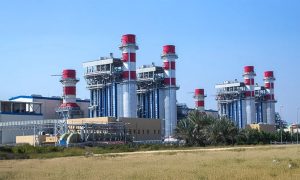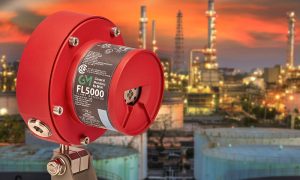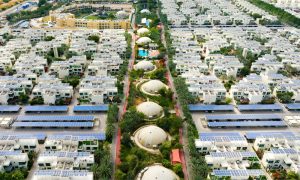Eaton’s Ashraf Yehia: Storage can ease energy demand concerns
Energy system is moving rapidly and the transition to renewable energy is accelerating, says Yehia

Ashraf Yehia, managing director at Eaton Middle East, sits down with MECN to discuss the importance of an efficient future in power management and how sustainable energy plays an integral role in its advancement.
What is the future of energy management in 2019 and the next few years?
The global energy market is undergoing a low-carbon transformation, with grid-scale battery-based technologies providing reliable alternatives to traditional peaking power plants and pumped hydroelectric storage projects. Across the world, power station upgrades are starting to deliver a dependable and cost-competitive means of balancing load and bringing renewable energy onto the networks.
The transition to renewable energy has accelerated in recent years, led by the rapid evolution and falling costs of these clean energy sources.
As a result, the energy system is moving rapidly from a centralised to a distributed structure. This brings new challenges for grid operators and at the same time opportunities for a growing community of energy prosumers.
As the region continues to ramp up its goals of meeting renewable energy targets, energy storage becomes a strong contender in dealing with energy demand, efficiency and sustainability.
What is microgrid technology and why has it gained traction in the past few years?
Microgrids are stand-alone electrical systems consisting of multiple generating sources and defined loads that can operate independently from the primary utility grid. They provide a reliable, efficient solution to unexpected power loss effectively balancing spikes in energy demand, optimising energy usage for more reliable power, reducing operating costs and carbon emissions.
Microgrid energy systems are becoming an exciting, even fundamental way to leverage new technologies, harness new energy sources and address new government regulations. Eaton’s engineers see microgrids as the dawn of a transformative age — and the culmination of decades’ worth of tireless research and development
Microgrids, in various forms, have been around for decades. But in recent years, multiple factors have converged to make microgrids increasingly viable and urgently necessary.
Can you explain a little bit about green switchgear? What are its advantages?
The shift towards renewable generation requires more grid flexibility and bottleneck avoidance. This means switchgear that in the past was passive will become a more active part of smarter and more robust grids.
Eaton’s Medium Voltage (MV) Switchgear can help resolve these challenges as it can switch up to 10,000 times. In addition, the Xiria family of MV switchgear does not use any SF6 gas. SF6 has the worst global warming potential of any gas – 23,900 times stronger than CO2, so Eaton has by design the greenest of all MV Switchgear on the market today.
The total cost of ownership of Eaton’s switchgear is much lower than those using SF6, thus offering additional grid infrastructure cost avoidance. Microgrids based on the Power Xpert Energy Optimizer are another tool to help manage the grid and are also designed to optimise the use of renewable energy in large campuses and industrial sites.
Another way Eaton helps support sustainability is with its energy storage systems. Building operators and residential customers both use the Eaton xStorage range to maximise the use of self-consumption from local solar PV.
End-users have embraced the move to greener power. By using energy storage, such customers increase self-consumption and at the same time save more on their energy bills.
xStorage Home for residential customers allows direct integration of solar which reduces the upfront installation cost. In addition, if for some reason the power does go out, xStorage Home provides backup power to ensure they never miss a goal!
These same advantages also apply to businesses, which can benefit from the xStorage Building systems to participate in demand response and other services to the grid. These customers value the lower bills, increased resilience in case the grid fails and a reduced overall CO2 footprint.
Why do we need energy storage with respect to mechanical, electrical and hydrogen technologies?
Energy storage is a key factor in helping address grid stability and peak demand challenges. As renewable energy sources continue to be integrated into the grid, energy storage technology can negate the need to build dedicated peaking power plants while reducing greenhouse gas emissions.
The global energy market is undergoing a low-carbon transformation, with grid-scale battery-based technologies providing reliable alternatives to traditional peaking power plants and pumped hydroelectric storage projects. Across the world, power station upgrades are starting to deliver a dependable and cost-competitive means of balancing load and bringing renewable energy onto the networks.
The drive towards renewable energy is a given. Few countries in the GCC have not already set goals in to increase their energy mix and are actively looking for ways in which to drive the use of cleaner, more renewable energy sources forward.
What is driving this change?
The drive for sustainability has never been higher. Ensuring that the reduction of the CO2 impact of the energy chain accelerates, will be in part dependent on the change in the energy mix towards a much higher proportion of renewable generation which is reliant on energy storage for success. Ever more energy efficient appliances and machinery, such as the replacement of traditional electrical motor starters by variable speed drives or the conversion to electrical cars, are helping to reduce the energy impact of every human activity, however energy storage and control will also help shift and change energy consumption in a positive way.
A need for resilience is continually growing. Energy storage will help mitigate energy risk, by improving grid stability, enabling sites to continue to function during power fluctuations and outages and ensuring the resilience of critical social infrastructure as a key element of micro-grids. Energy storage will also improve our response to effective disaster recovery by enabling black starts and solving capacity constraint issues in times of catastrophic physical or environmental events.
Access to energy should be a right. Over three billion people rely on polluting and inefficient cooking, lighting, and heating methods that are expensive and have serious health impacts. Enabling the delivery of cleaner, more affordable energy to these people, including the 1.2 billion people who have no access to electricity at all, will really make a difference, and energy storage can help people convert, store and supply renewable power easily and effectively in no grid and poor-grids situations.
If we were to take energy efficient hydraulics; what are some system solutions for minimizing losses?
Using energy in an efficient manner not only saves companies money, but also saves resources and combats climate change. The introduction of the international ISO 50001 standard in 2011 marked the first globally applicable standard for certifying energy management systems.
Pumps are responsible for most of the power consumption in industry. In relation to a pump’s service life, energy costs amount on average to roughly 45% of the total costs involved.
There will also be costs for repairs and maintenance. Based on the experience of the German Energy Agency (dena), measures aimed at improving energy efficiency with pumps pay off quickly, in most cases. A study carried out in the industrial and business sectors indicates that the potential for reducing costs is, on average, between 20% and 30%. In the case of a major steel producer, the measures applied just to two pump systems achieved a reduction in the annual power consumption of 2.7 million kWh.
Who are some of your end-users/ industries that benefit from innovations in effective management of electrical, hydraulic and mechanical power?
Eaton is providing critical power management solutions and services in support of some of the high-profile projects across the region.
We serve the Oil & Gas, marine, hydraulics and the general industrial sector, working diligently to provide the latest solutions. We work in a fast-paced market which has seen, and will continue to witness, significant changes and demands. We must ensure we are working closely with our customers and partners to understand the needs to the market and how Eaton can support the demand for power that these changes bring.

























